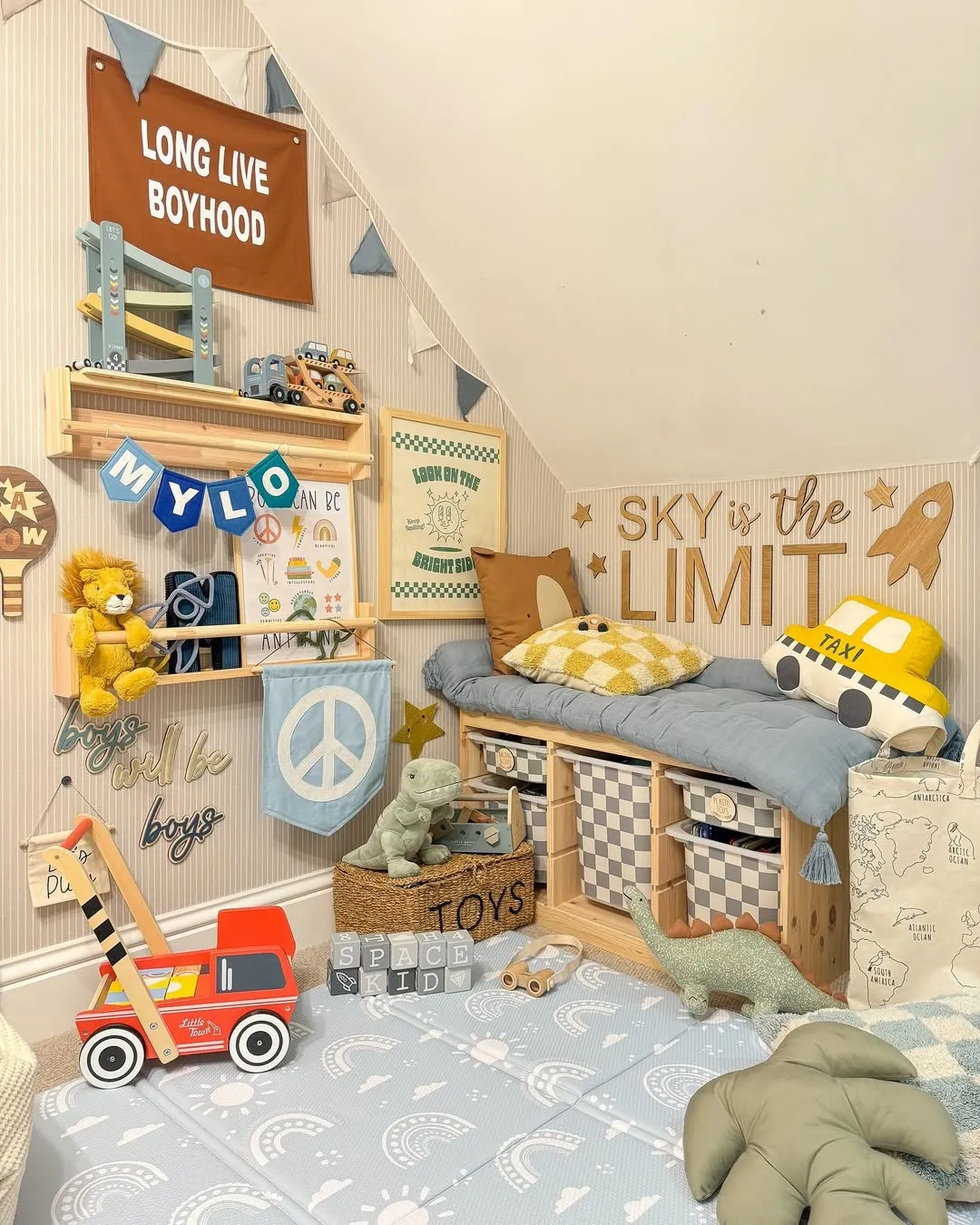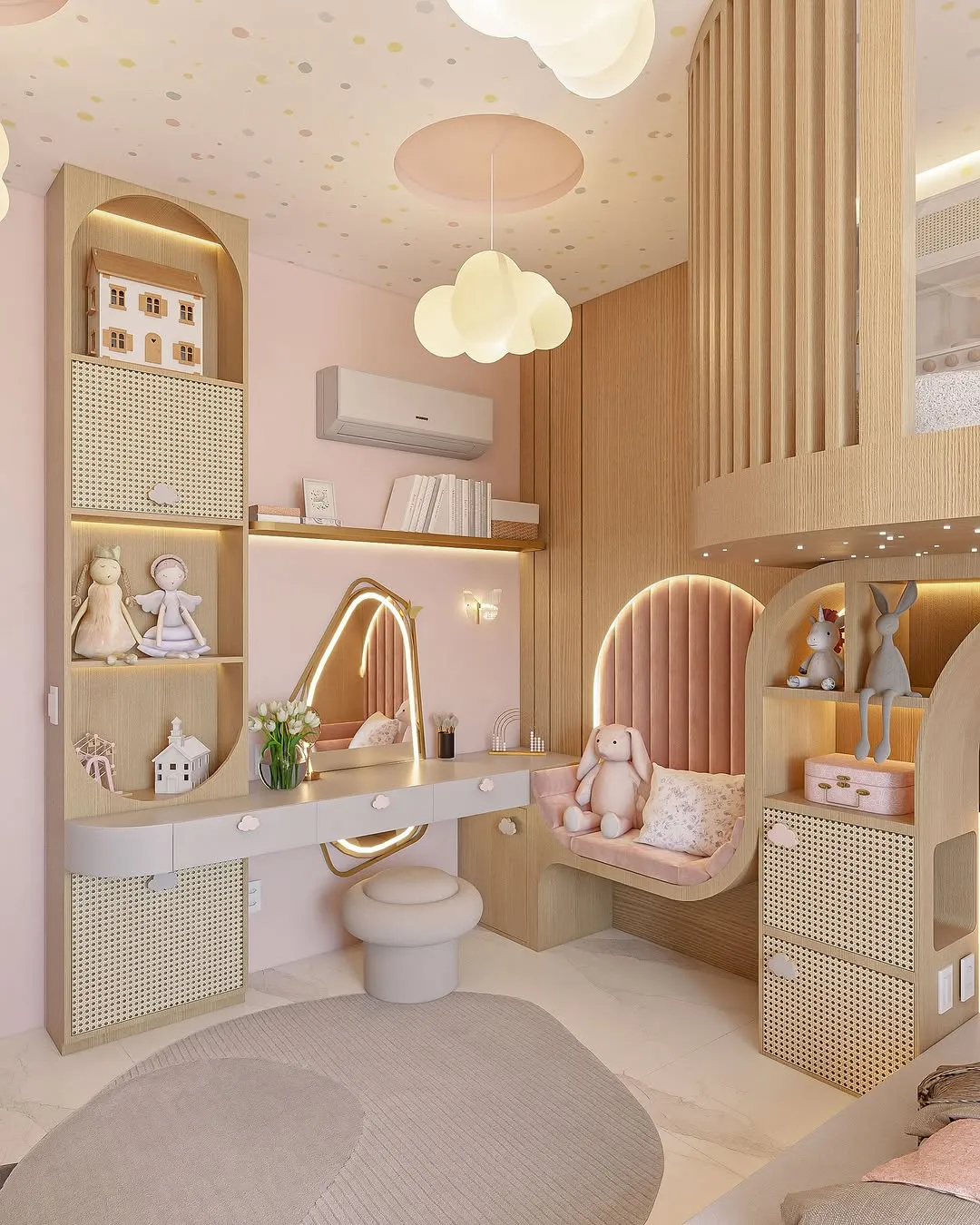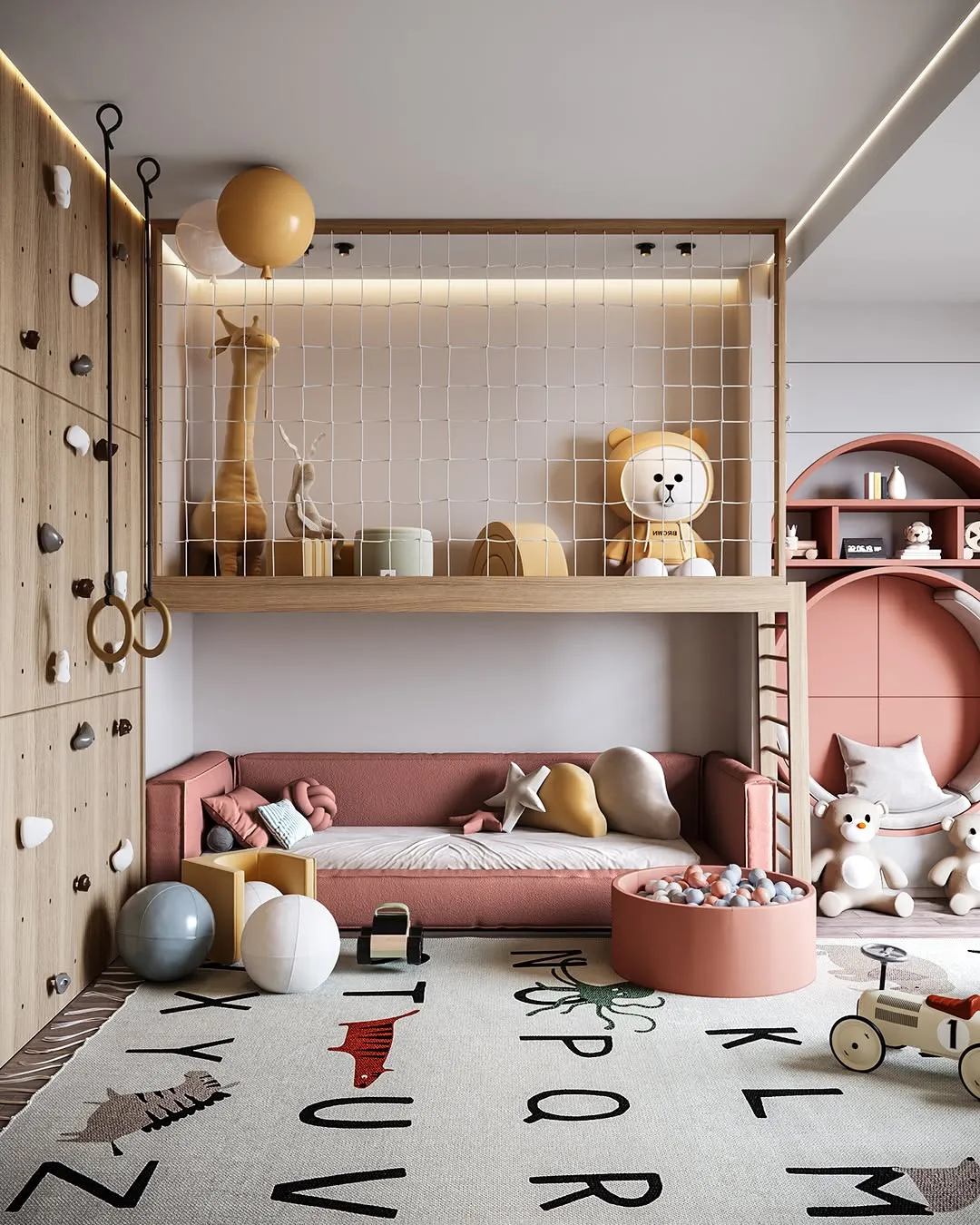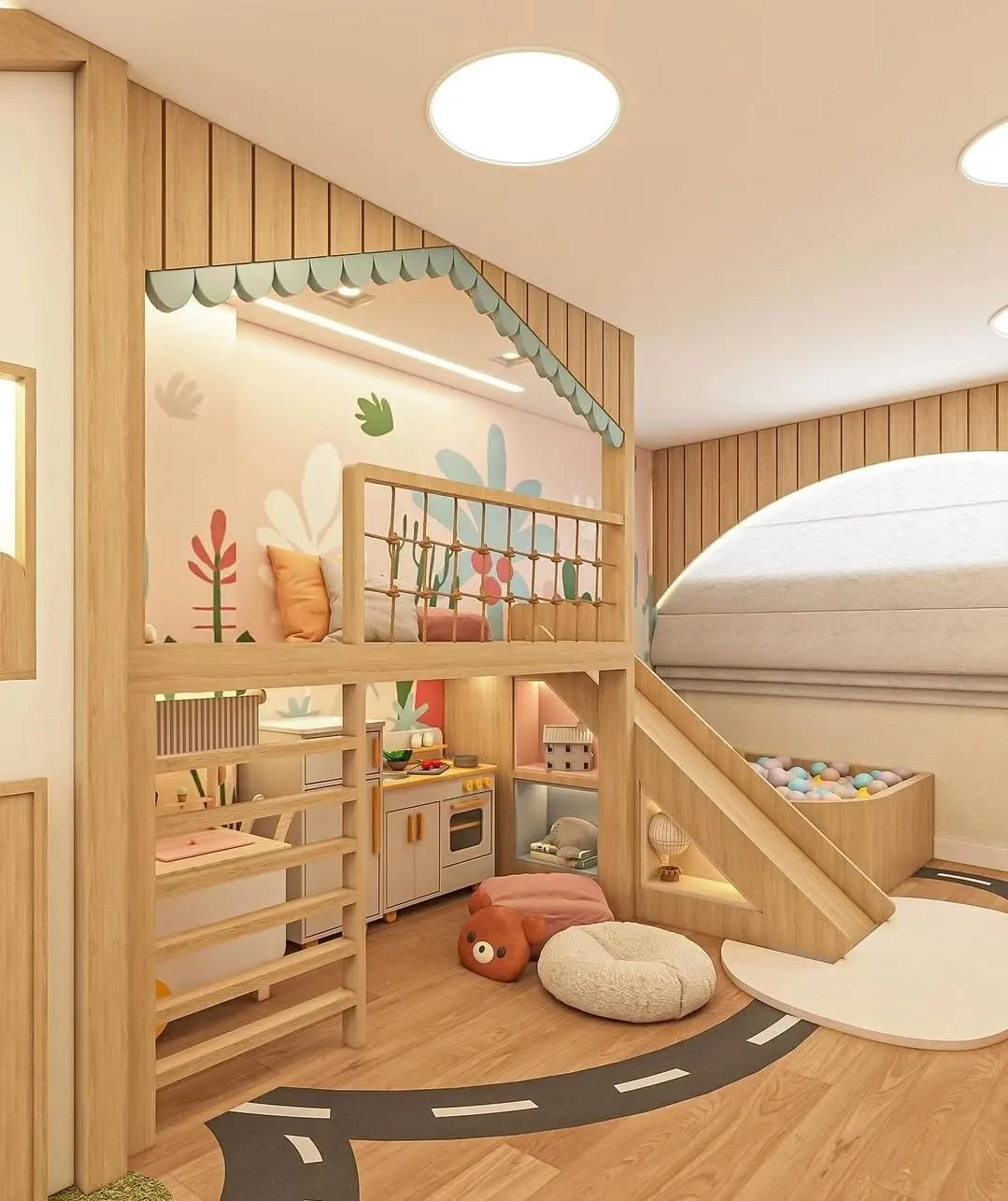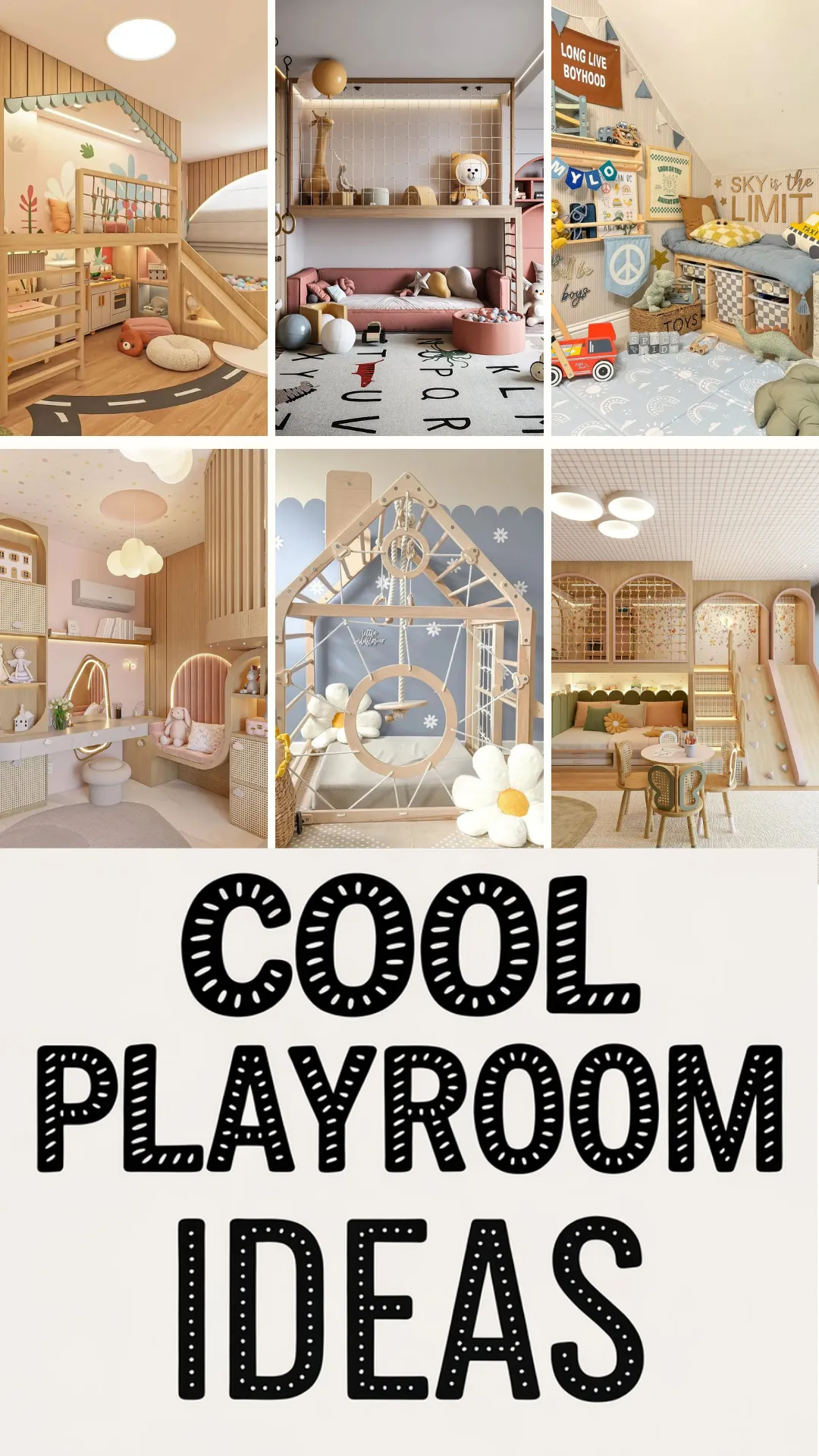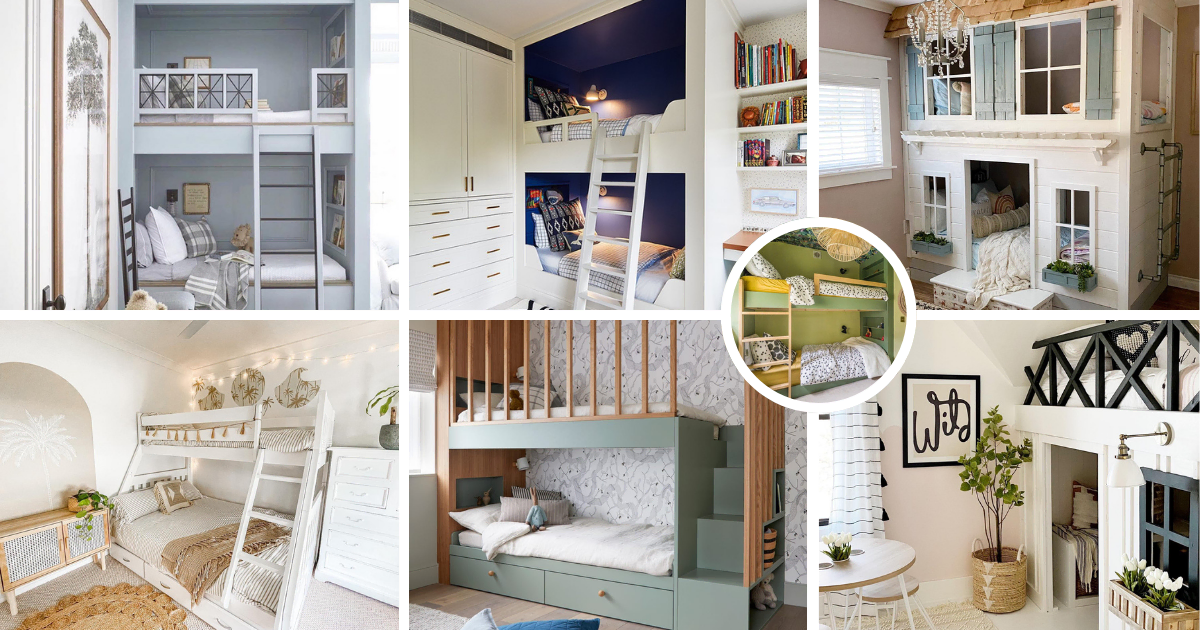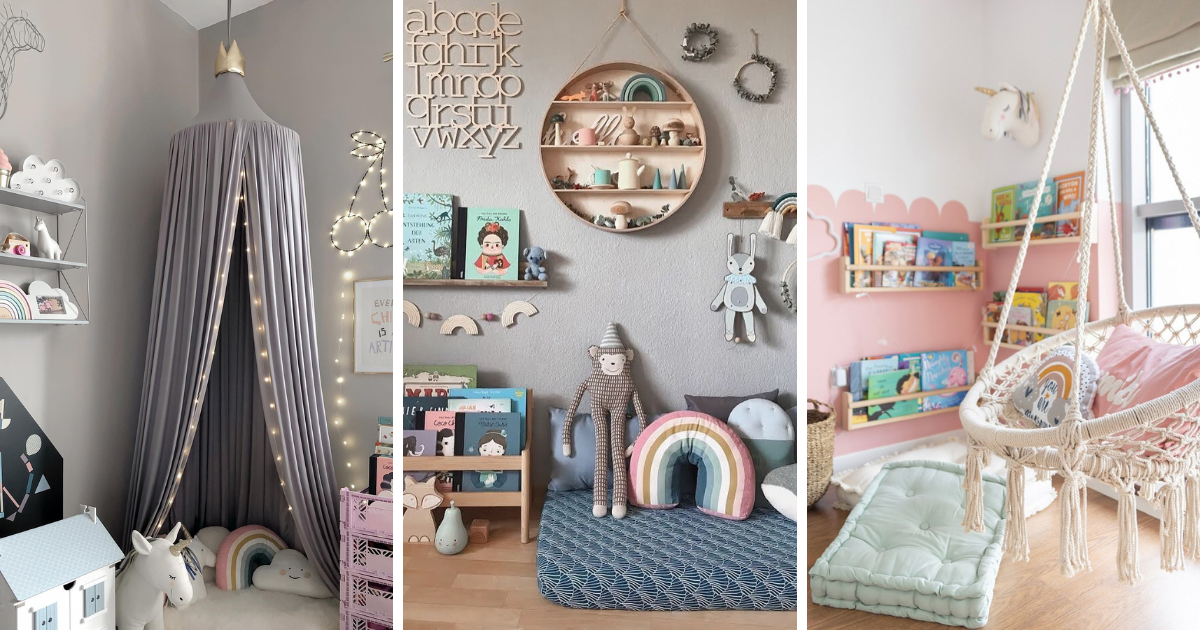The content on this site may include affiliate links. As an Amazon Associate I earn from qualifying purchases. This means that, at zero cost to you, we will earn an affiliate commission if you click on one of the links and buy something.
We all know the struggle: toys scattered everywhere, missing puzzle pieces under the couch, and art supplies mysteriously multiplying on every surface. Sound familiar? Designing a playroom that’s not only fun but also functional might feel like an impossible dream, but trust me—it’s doable.
A well-designed playroom isn’t just about keeping the clutter contained (though, let’s face it, that’s a big perk); it’s about creating a space where your kids can unleash their creativity, burn off energy, and maybe even sit still long enough to read a book.
In this guide, we’ll share some simple, practical steps to design a playroom that ticks all the boxes: organized, safe, stylish, and most importantly, kid-approved and show you 22 cool playroom ideas we spotted over on Insta to inspire you!
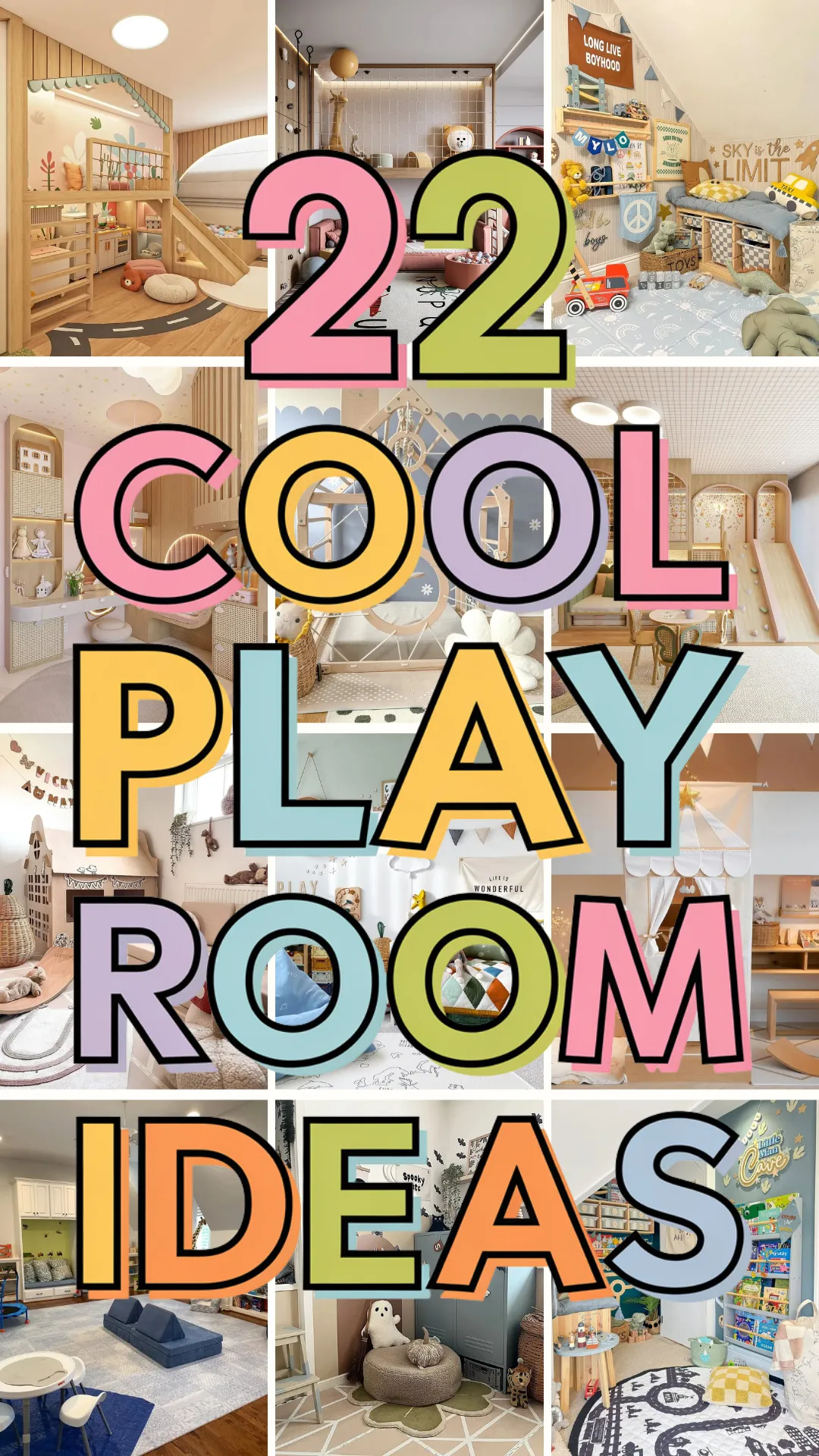
Step 1: Start with a Purpose
Before you start shopping for cute rugs and colorful bins, take a step back and think about the purpose of the playroom. What do you want this space to do for your kids—and for you?
- Consider Your Kids’ Interests: Are your little ones budding artists who love to paint? Mini architects building towers with blocks? Or active adventurers who climb on everything in sight? Tailor the playroom to their interests to make it a space they’ll love spending time in.
- Create Activity Zones: A playroom works best when it’s divided into zones. Think about a reading nook for quiet time, an open area for active play, and a designated spot for arts and crafts. Not only does this make the space feel organized, but it also helps kids learn to tidy up (one zone at a time—small wins!).
- Get Them Involved: If your kids are old enough, ask for their input. What’s one thing they’d love to have in their playroom? Their ideas might surprise you, and including them in the process helps them feel more invested in keeping the space tidy.
Pro Tip: Use rugs or furniture to visually separate zones without building walls—this keeps the space open and flexible as your kids’ needs change.
Up next, we’ll talk about safety—because a dreamy playroom isn’t much fun if it’s full of hazards! Keep scrolling!
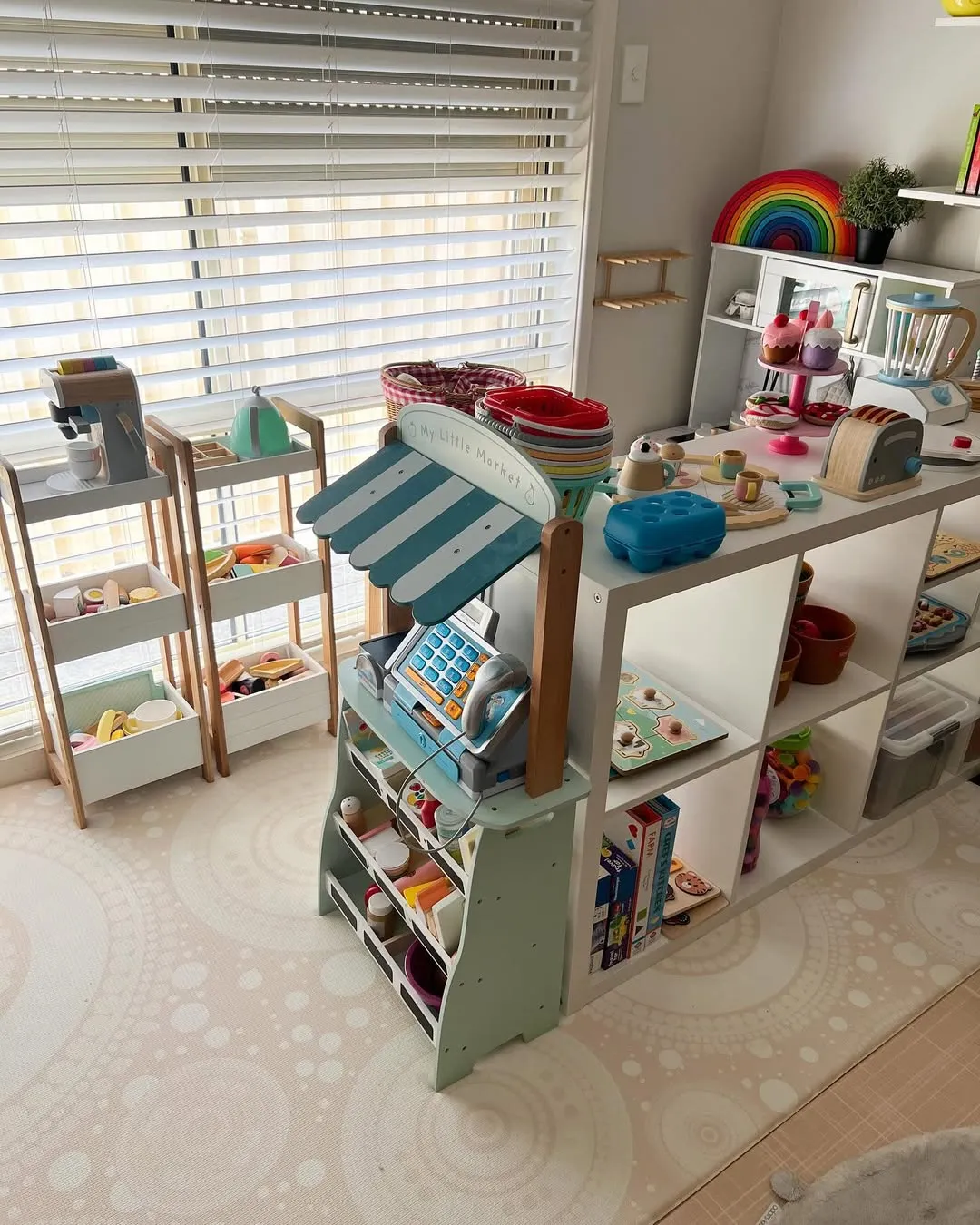
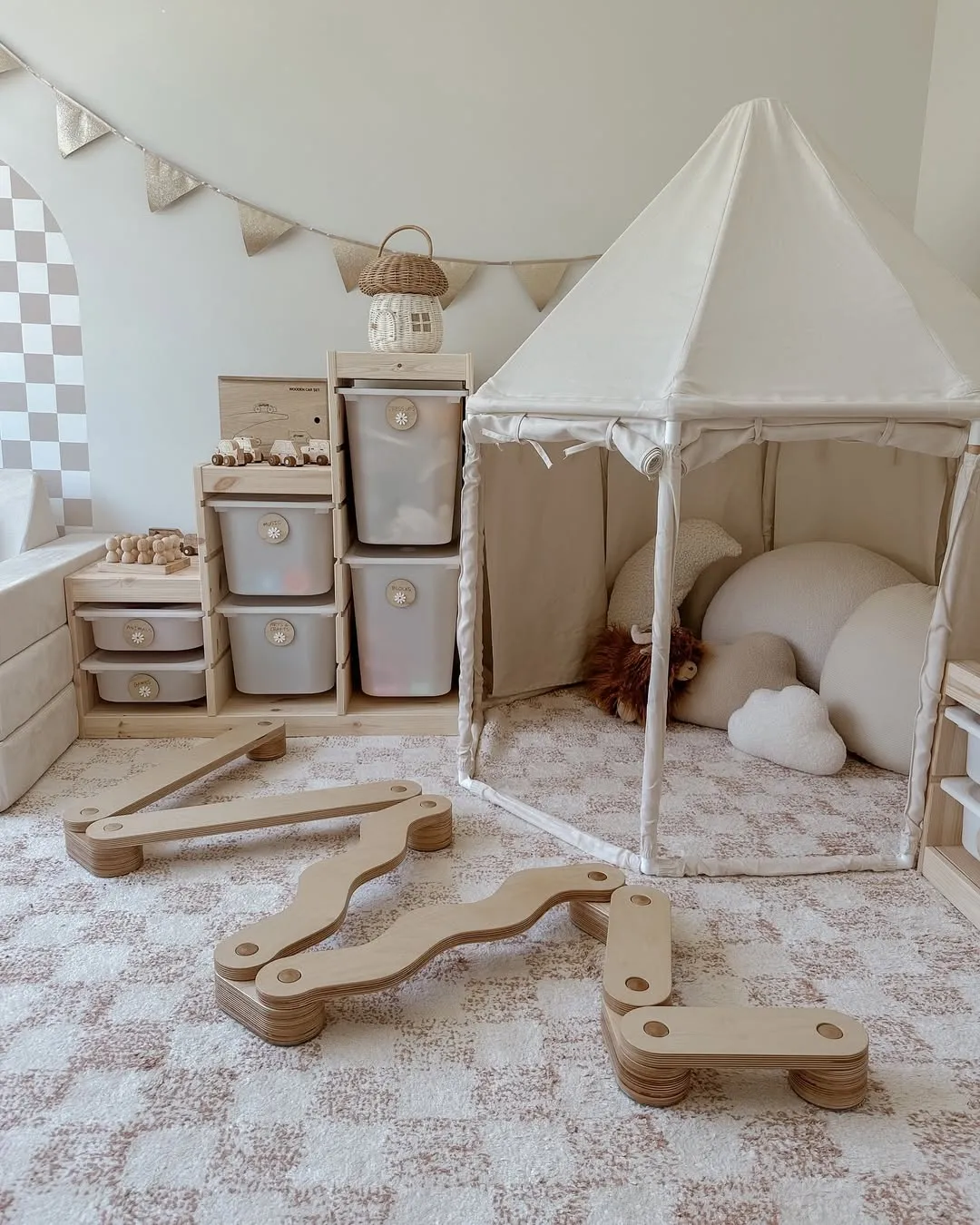
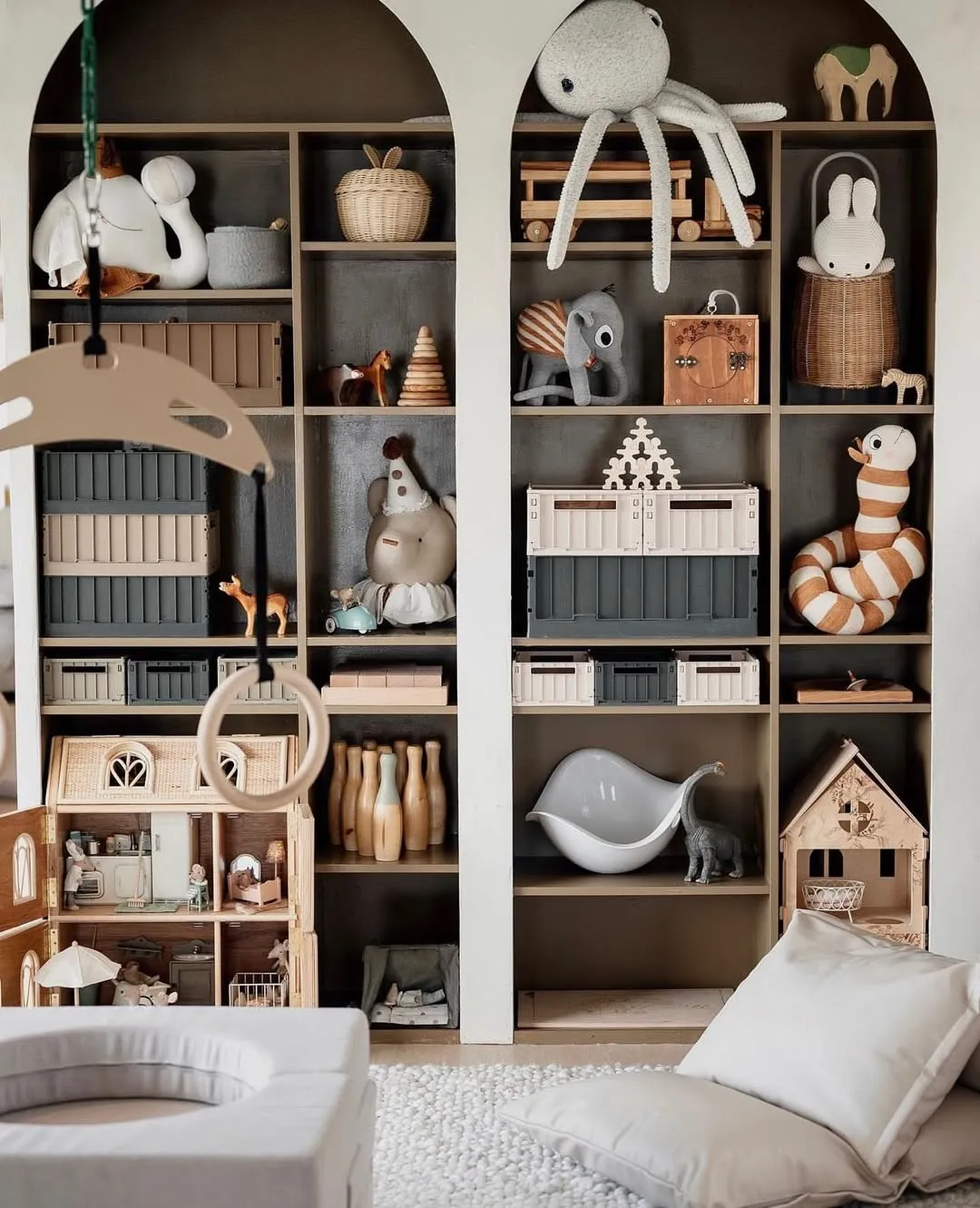
Step 2: Prioritize Safety
A playroom should be a space where your kids can play freely—and safely. While it’s tempting to focus solely on the fun features, making safety a priority will give you peace of mind while they’re busy having a blast.
- Secure Furniture: If you’re using shelves, cabinets, or any taller furniture, be sure to anchor them to the wall to prevent tipping. Heavy books or bins should be stored on lower levels where little hands can reach them safely.
- Soft Surfaces for Falls: Add padded play mats, plush rugs, or even soft gym flooring to cushion any tumbles. This is especially important if the playroom has active elements like climbing frames or slides.
- Childproofing Basics: Cover electrical outlets, hide cords, and avoid furniture with sharp corners. Opt for rounded edges where possible, and keep small items or choking hazards out of reach.
- Toy Safety: Regularly check toys for wear and tear—no one wants a loose wheel on a favorite truck or a ripped teddy spilling stuffing. Keep small toys, like marbles, in containers that older kids can access but are out of reach for toddlers.
Pro Tip: Use storage bins with lids or drawers that glide smoothly to avoid pinched fingers.
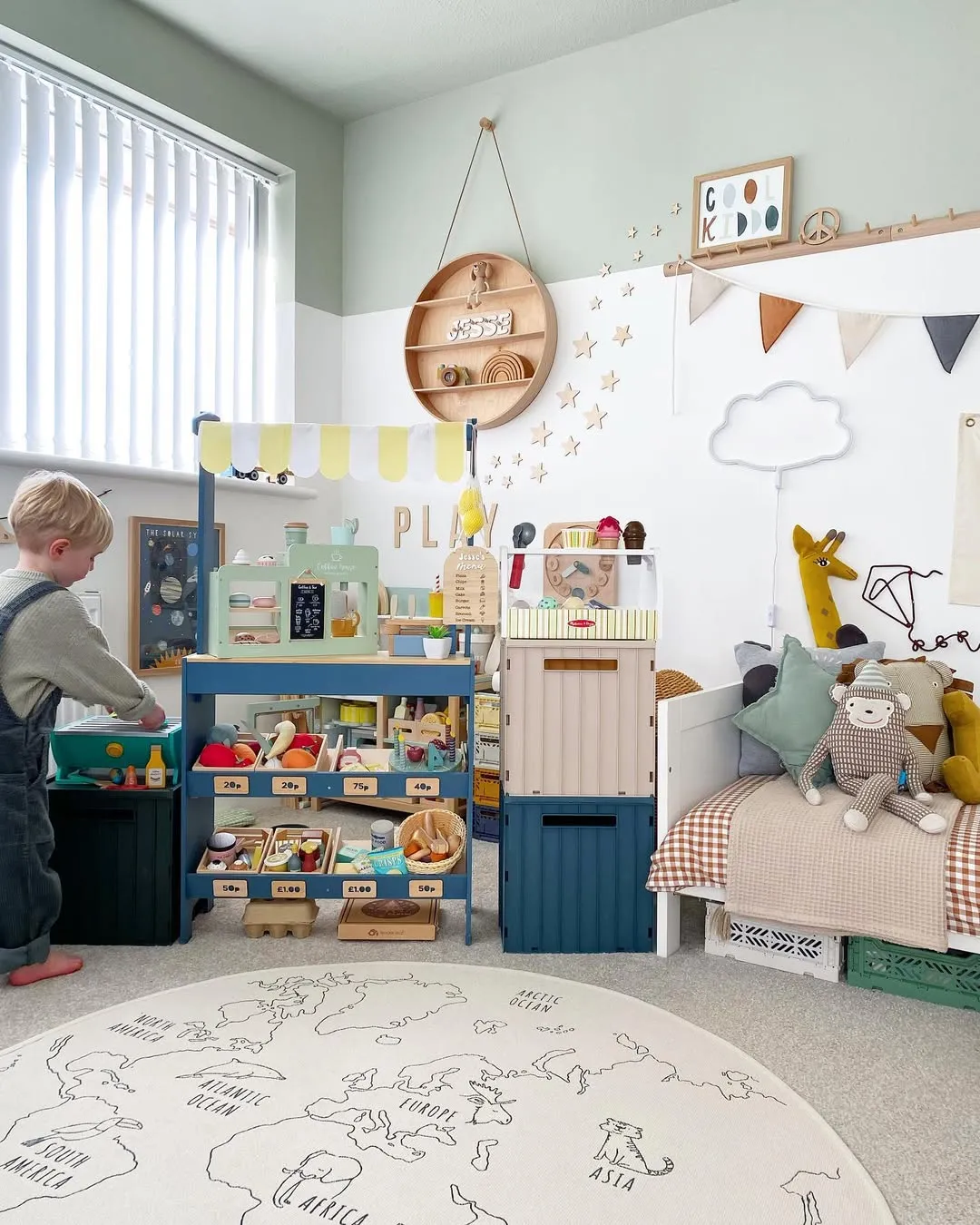
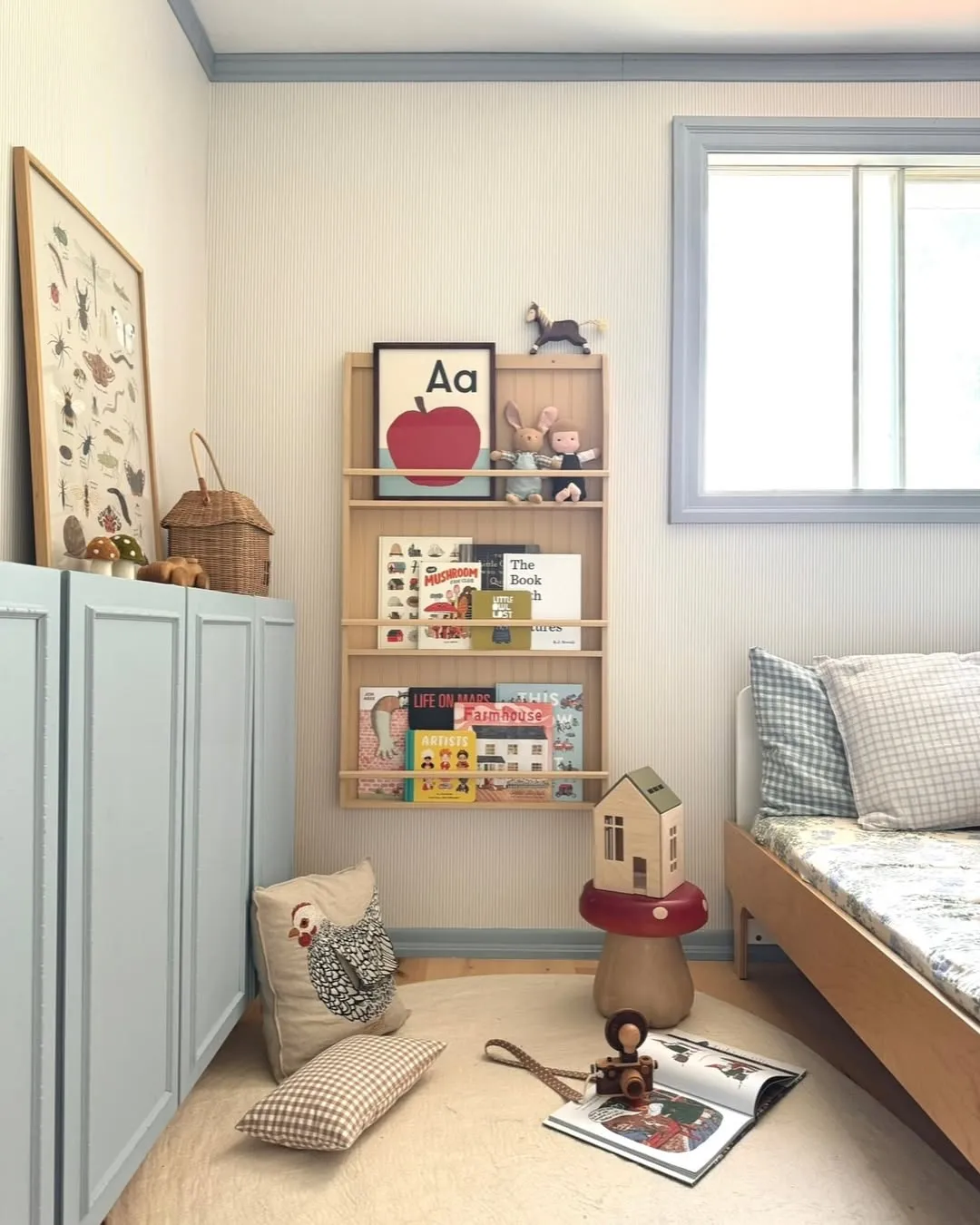

Step 3: Storage That Works
Let’s be honest: a playroom can go from Insta-worthy to chaos in the blink of an eye without the right storage solutions. The secret to a tidy, functional playroom? Storage that’s both practical and easy for kids to use.
- Low Shelves for Accessibility: Choose shelves that are at your child’s height so they can grab (and put away) toys independently. Cube storage is a lifesaver for organizing everything from books to blocks.
- Baskets and Bins: Woven baskets or colorful bins are perfect for corralling loose toys. Label them with words or pictures so even pre-readers know where everything goes. Bonus: they double as decor!
- Hidden Storage: Benches with built-in storage or ottomans with removable tops are perfect for stashing toys while keeping the room looking tidy. These multi-use pieces save space and keep the floor clear for play.
- Rotate Toys: Instead of overwhelming kids with all their toys at once, consider a toy rotation system. Store some items away and switch them out every few weeks—it keeps things fresh and exciting without adding clutter.
Pro Tip: Use stackable, transparent bins for smaller toys like Legos or action figures. Being able to see what’s inside makes cleanup (and finding that one piece) so much easier!
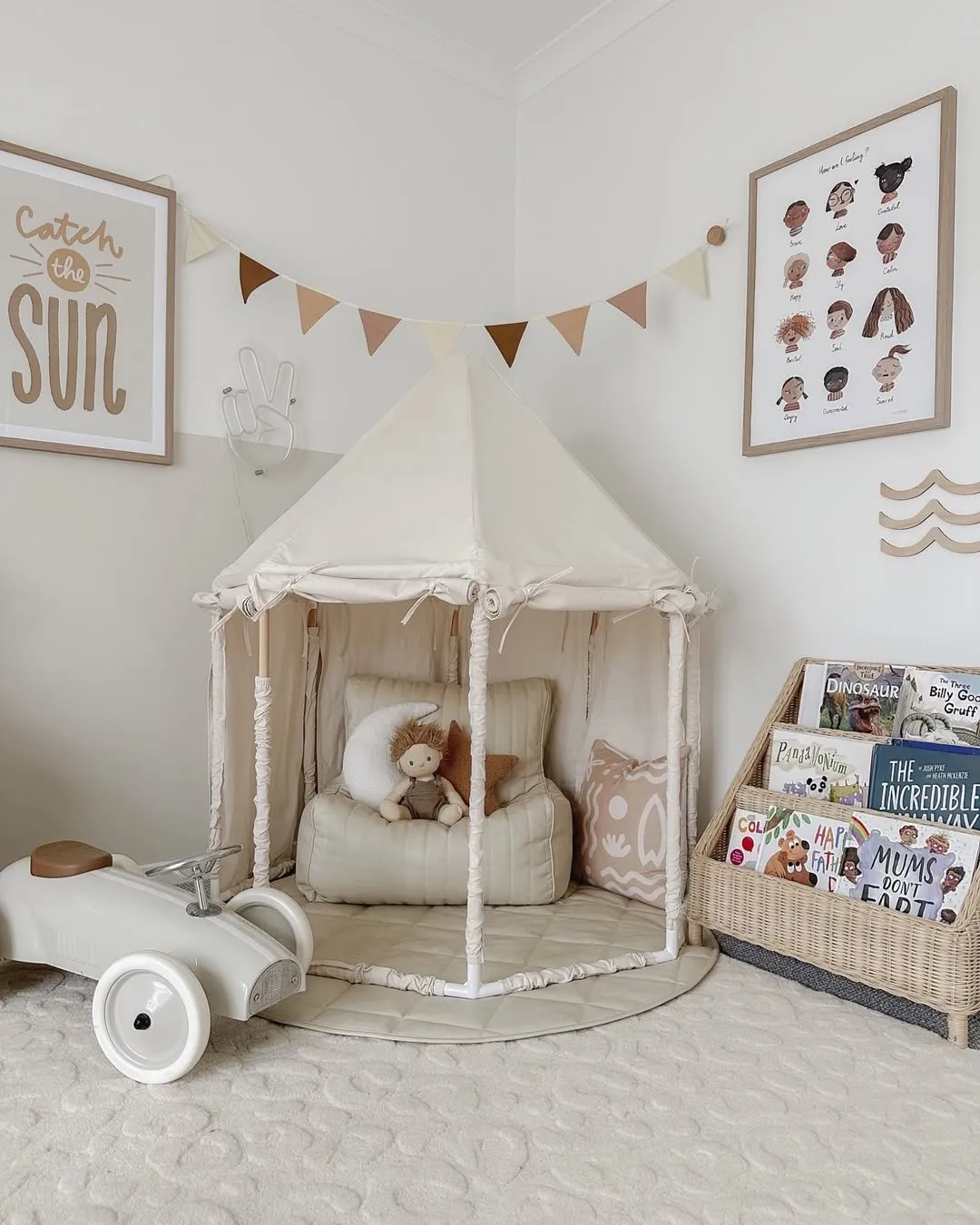
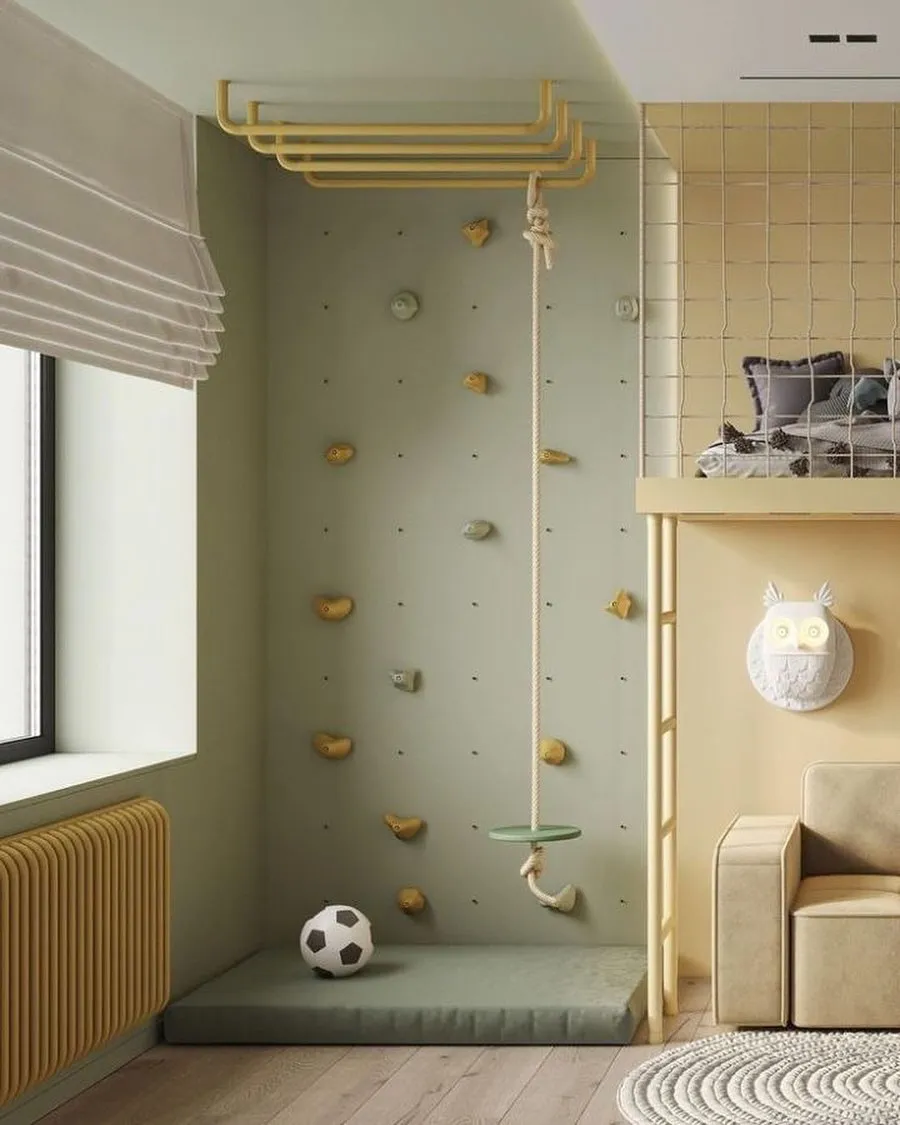
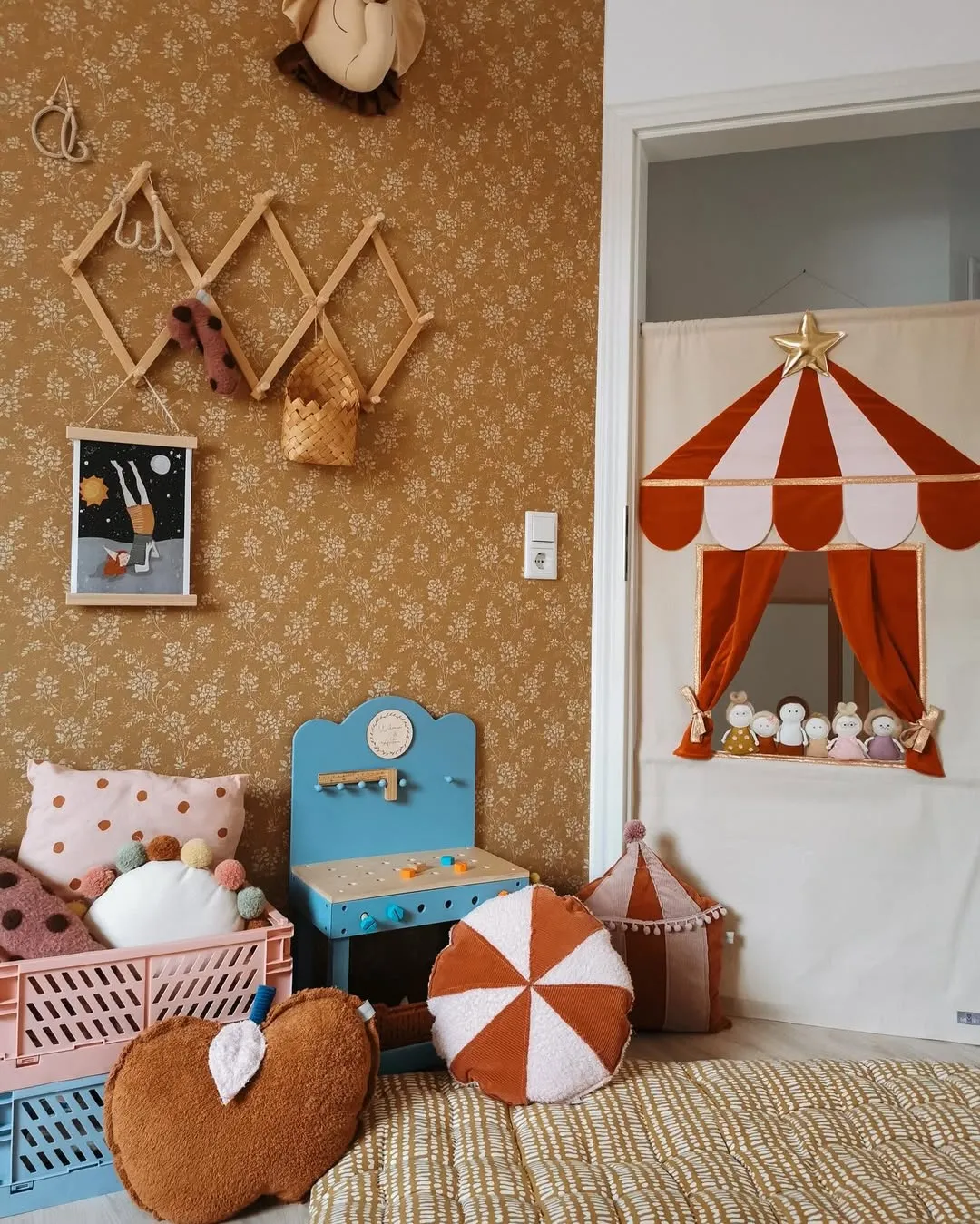
Step 4: Add Fun and Function
A great playroom isn’t just about looking good—it’s about creating a space that’s as practical as it is fun. Combining functionality with playful elements ensures your kids will want to spend hours enjoying their space.
- Incorporate Active Play Elements: If your kids love to climb, swing, or slide, consider adding a small climbing wall, monkey bars, or a rope swing. These features not only encourage physical activity but also make the playroom a mini indoor adventure zone.
- Create Imaginative Play Areas: Think about adding a play kitchen, a puppet theater, or even a mini market stand. These setups foster creativity and role-playing, helping kids explore their imaginations while learning practical skills.
- Make Room for Creativity: A dedicated art or craft station with a child-sized table, chairs, and plenty of supplies is a must for little creators. Include easy-to-clean surfaces and storage for supplies like crayons, markers, and paper.
- Multi-Functional Furniture: Choose furniture that does double duty, like a reading bench with hidden storage or a loft bed with a play area underneath. These pieces maximize space while adding an element of fun.
Pro Tip: Add a chalkboard or whiteboard wall to encourage doodling, drawing, or even a spot for keeping track of daily chores or playroom rules.
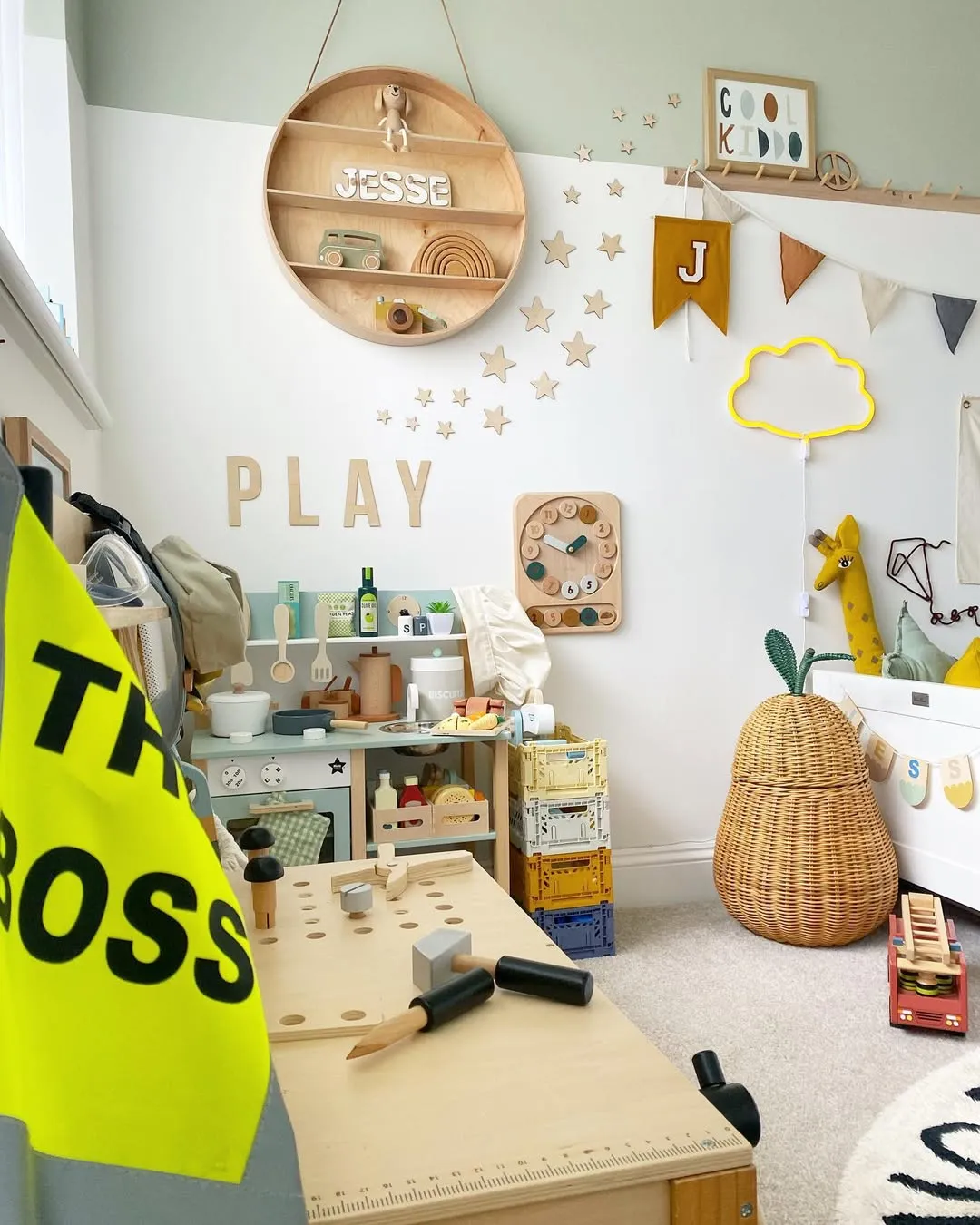
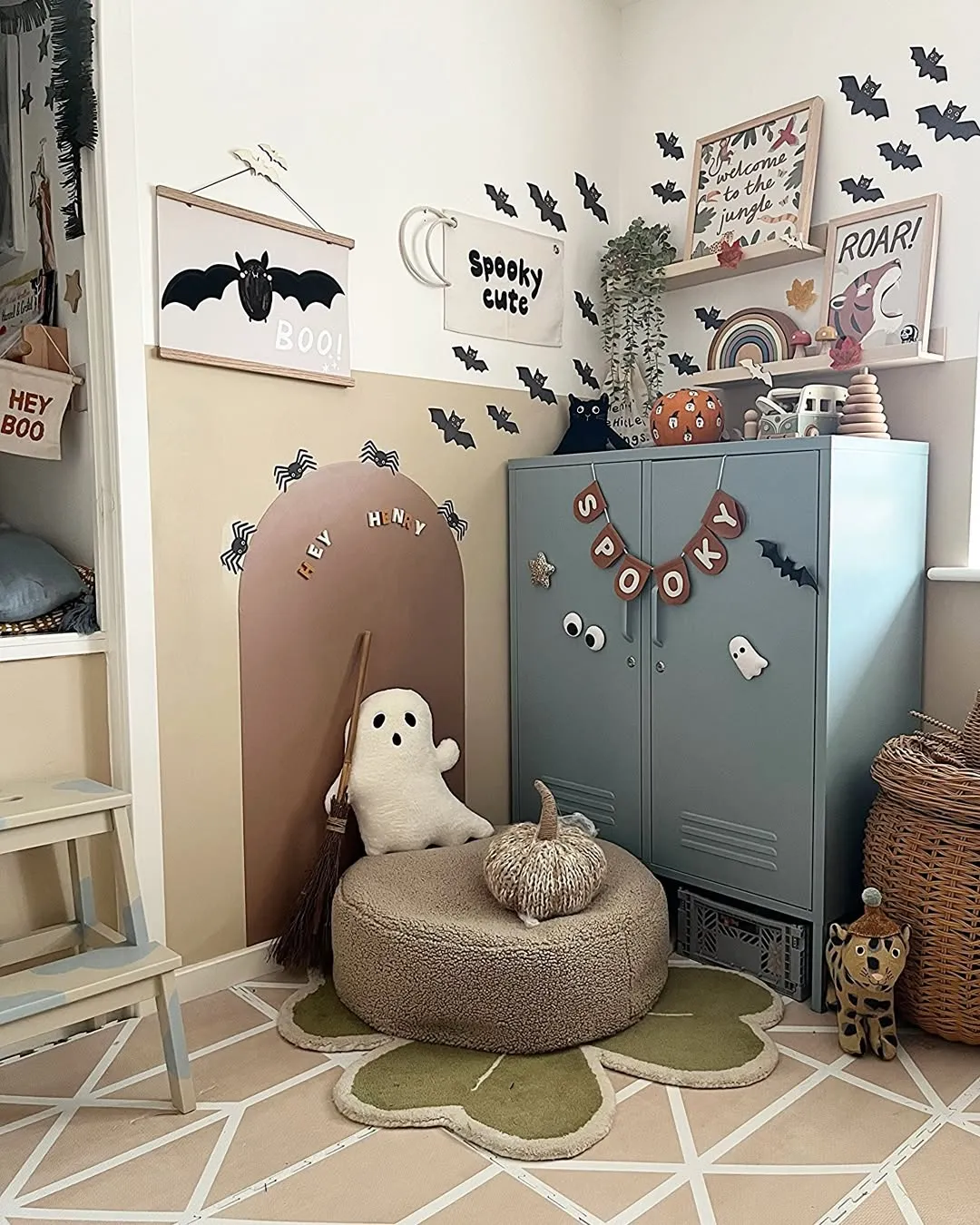
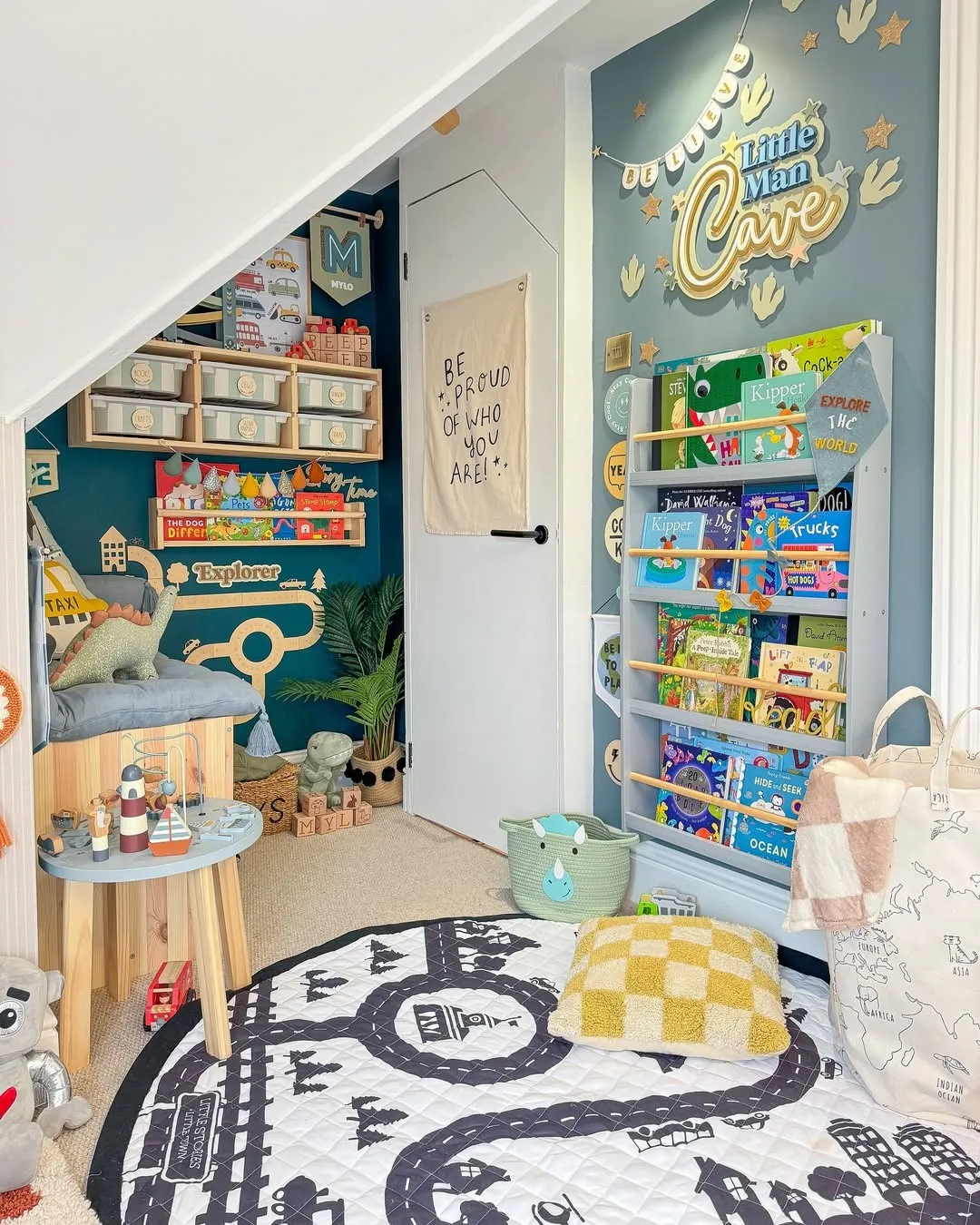
Step 5: Choose a Kid-Friendly Aesthetic
Designing a playroom is the perfect opportunity to have fun with colors, patterns, and decor. However, striking a balance between playful and timeless ensures the space will grow with your kids.
- Pick a Theme or Palette: Whether it’s a subtle woodland theme, a rainbow explosion, or a minimalist neutral vibe, choose a cohesive look for the room. Soft tones with pops of bright colors work great for a fun yet calming atmosphere.
- Add Personality with Wall Art: Wall decals, bunting, and framed prints add instant character without the permanence of paint. You can swap them out as your kids’ interests change.
- Layer Textures for Comfort: Combine soft rugs, cozy cushions, and plush beanbags to make the space inviting. These elements are perfect for creating reading nooks or lounging areas.
- Light it Right: Use warm lighting to make the space feel cozy, and consider adding playful fixtures like cloud-shaped lights or string fairy lights for charm.
Pro Tip: Incorporate storage that matches the aesthetic of the room. Think wicker baskets for a natural look, colorful bins for a vibrant theme, or sleek white cubbies for a modern touch.
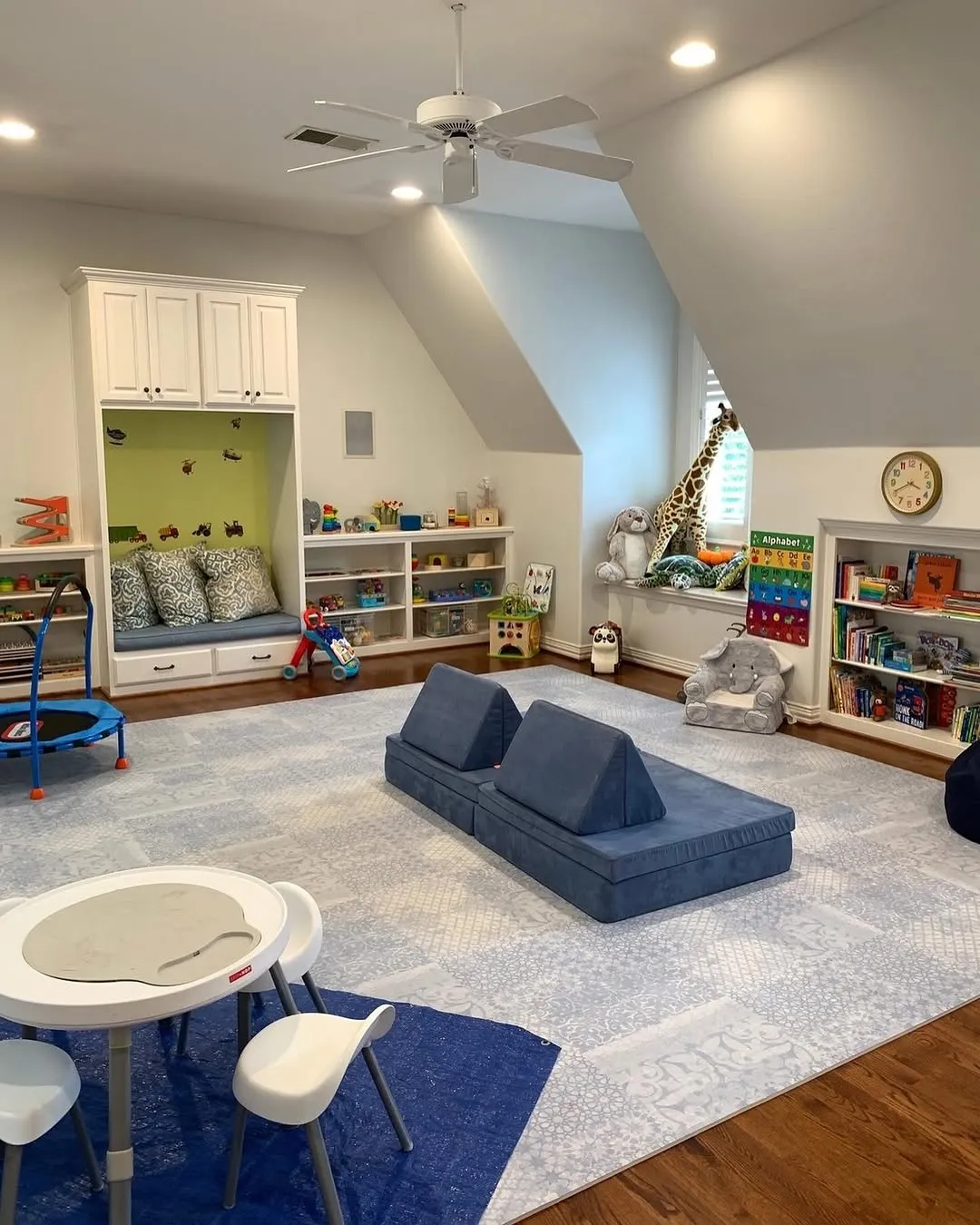
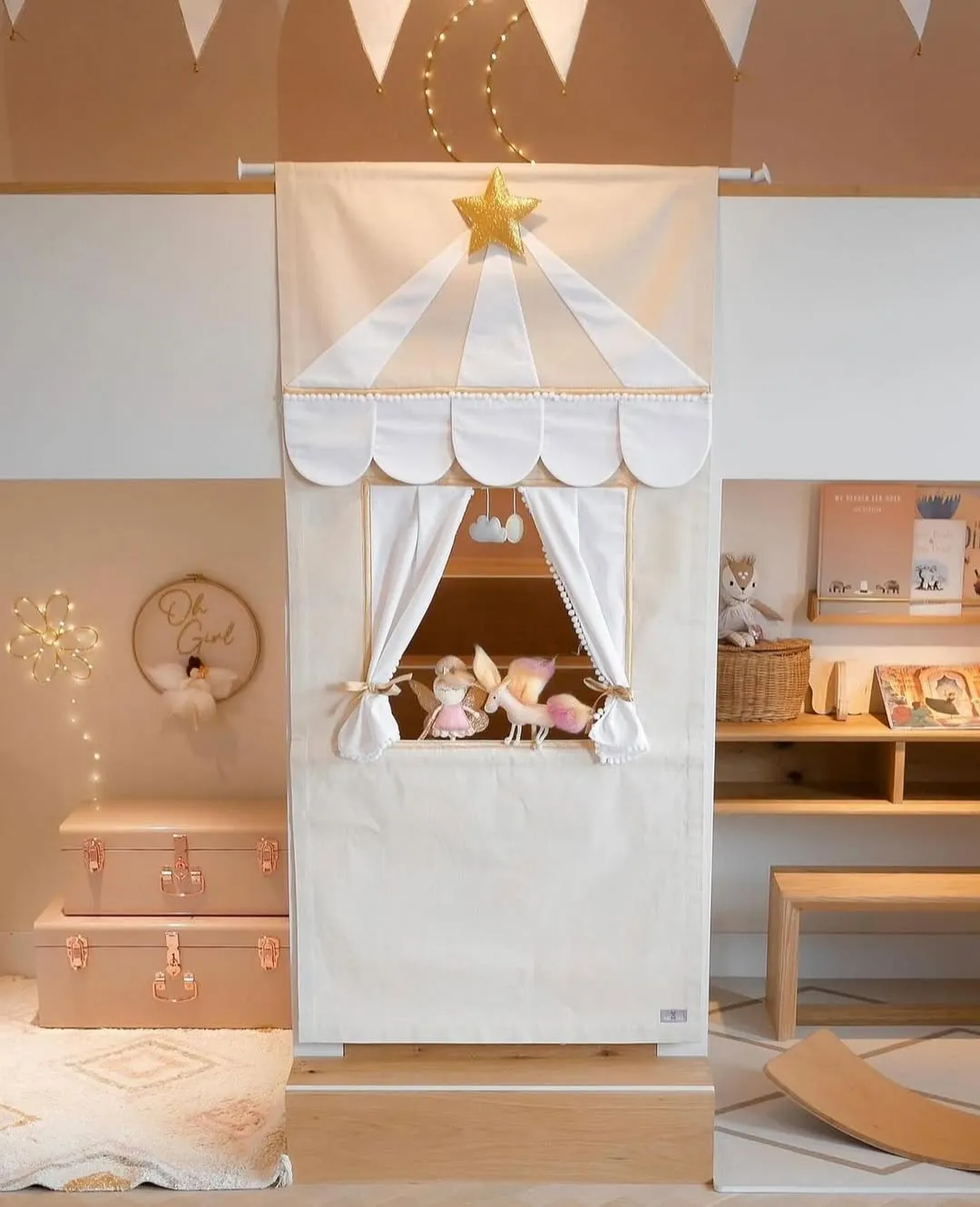
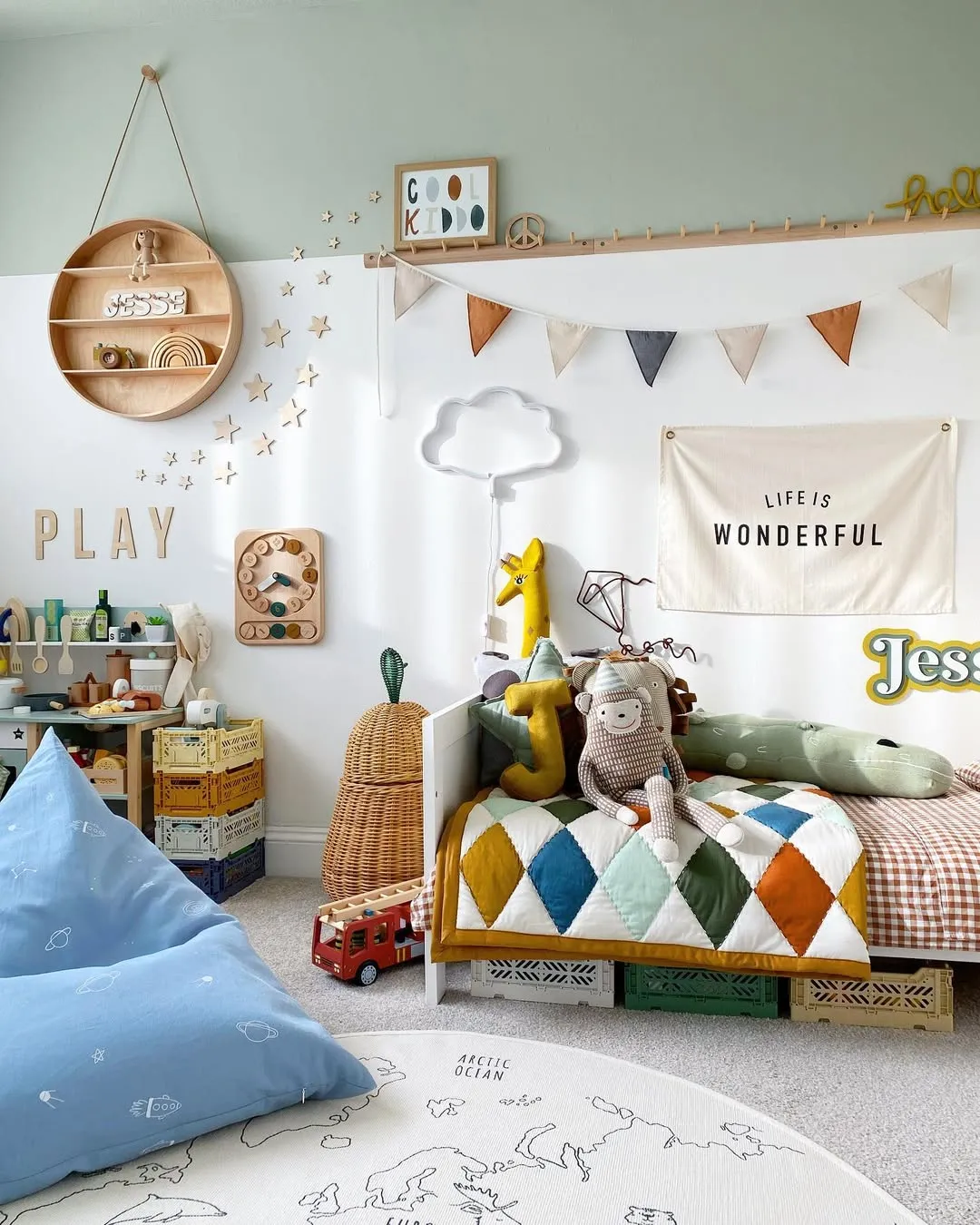
Step 6: Make It Personal
A playroom should feel like it belongs to your kids—after all, it’s their special space! Adding personal touches makes the room more inviting and meaningful.
- Include Their Name or Initials: Personalized wall art, banners, or even wooden name signs can make kids feel proud of their space. It’s a simple touch that adds a lot of charm.
- Display Their Creations: Set up a dedicated spot to showcase your kids’ artwork or crafts. A magnetic board, string with clips, or even a rotating gallery wall gives them a sense of accomplishment and ownership.
- Add Favorite Themes: Whether it’s dinosaurs, outer space, or fairies, incorporating their favorite themes through decor, bedding, or toys makes the playroom extra special.
- Create a Memory Wall: Include family photos, milestones, or a growth chart to give the playroom a sentimental touch. It’s a great way to make the space feel connected to the rest of the home.
Pro Tip: Let your kids help pick out a few decor items—they’ll love seeing their choices in the finished room!
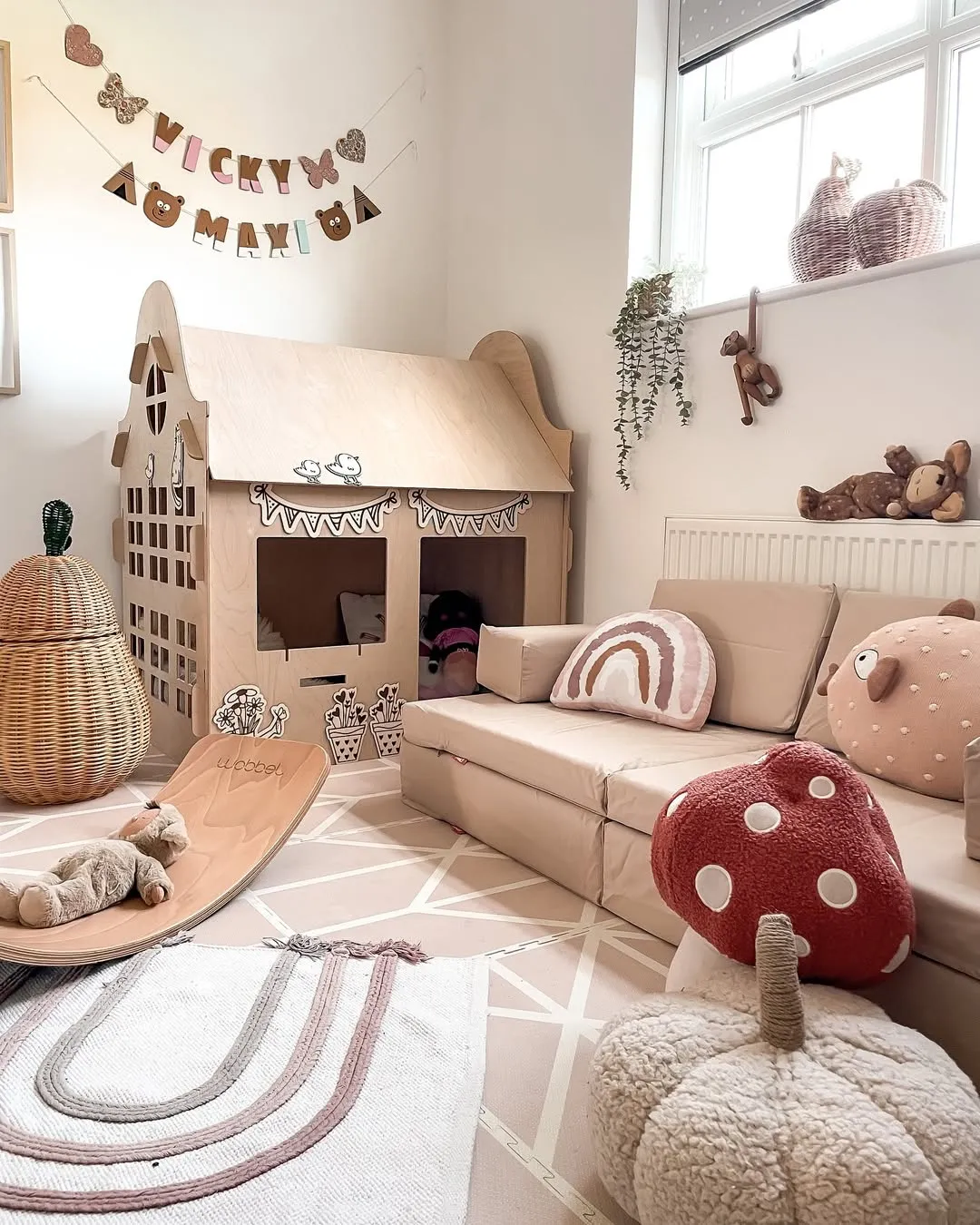
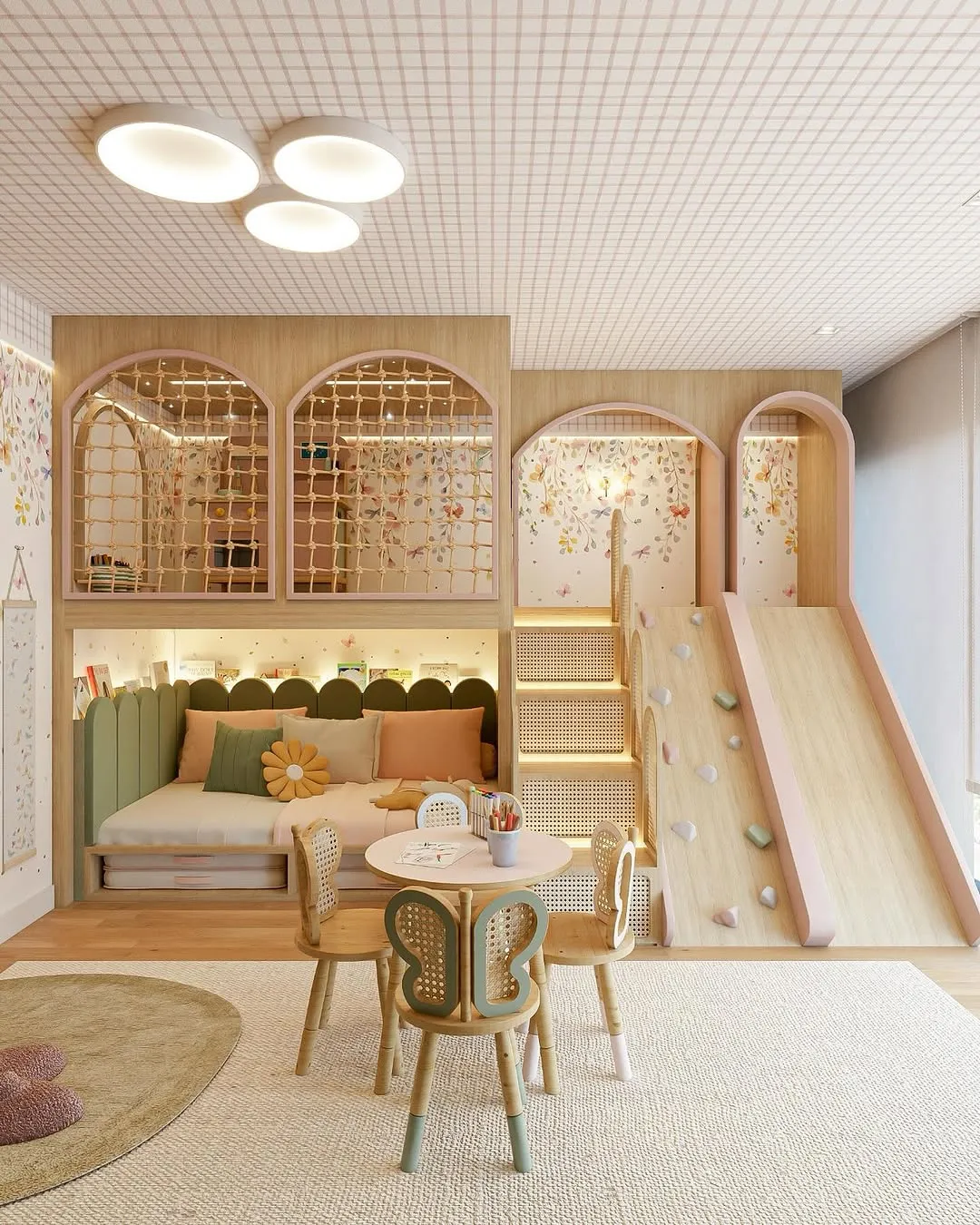
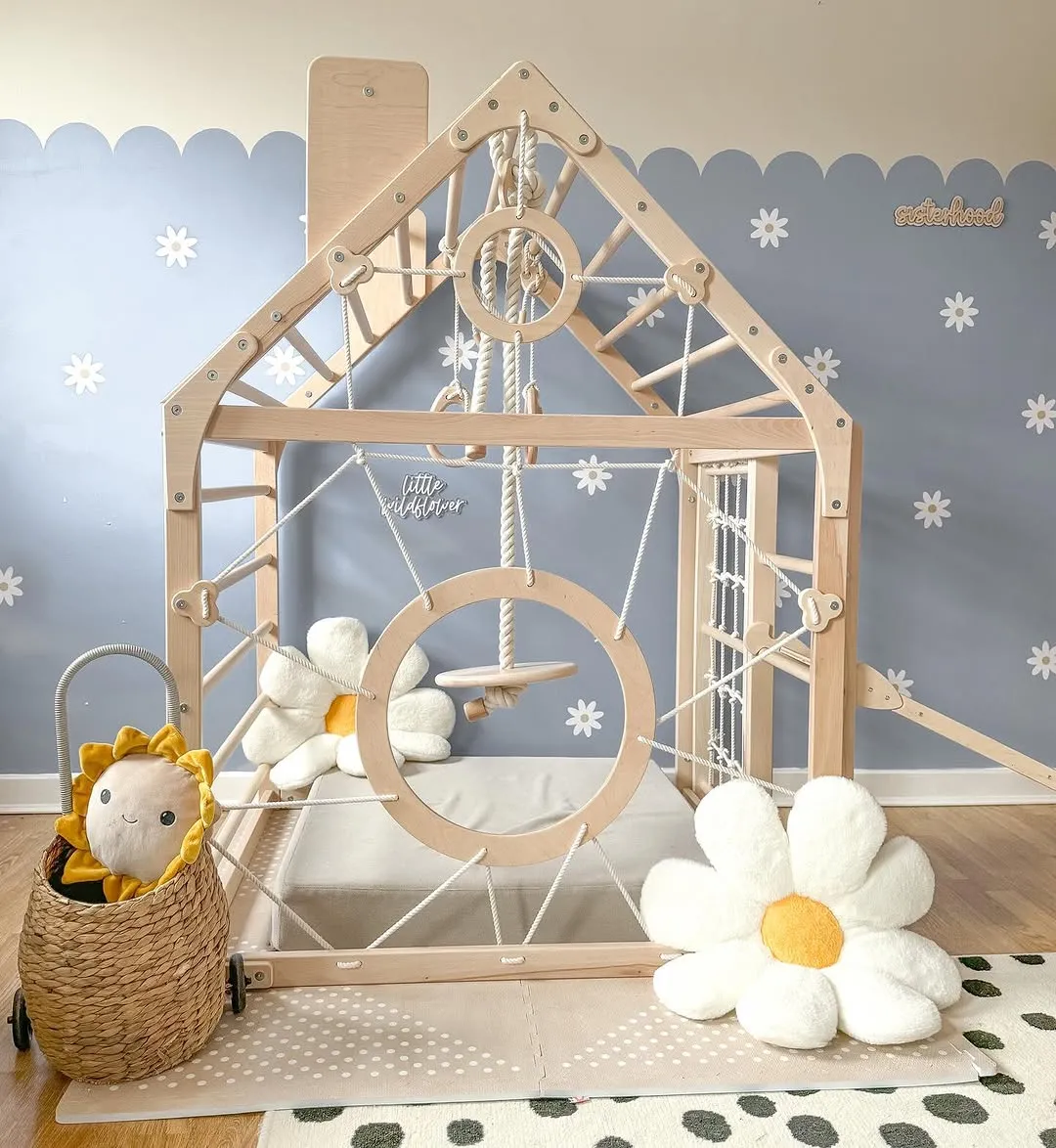
Creating A Playroom That Grows with Your Family
Designing the perfect playroom doesn’t have to be complicated. By focusing on functionality, safety, and fun, you can create a space that not only looks amazing but also works beautifully for your family’s needs.
Remember, a playroom isn’t just a place for toys—it’s a space where your kids can explore, create, and make memories. Whether it’s a small corner or a dedicated room, thoughtful design can transform it into a magical area your kids will love for years to come.
Have any favorite playroom tips or features? Share them in the comments—I’d love to hear how you’ve made your kids’ playroom unique!
